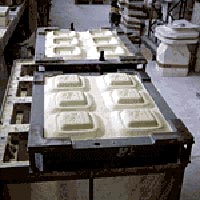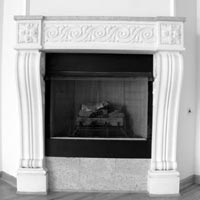About Gypsum
Plaster is manufactured by calcinations and grinding of gypsum rock (Calcium di hydrate), which is found naturally and abundantly in most places. After grinding and properly classifying, it is mixed with various additives in order to achieve the desired product characteristics. Depending on the production technique, type of the gypsum rock used as raw material and water-mixing ratio, the strength of a plaster can vary from the strength of chalk up to four times more than cement concrete. In addition to this, its water absorption ability can vary from that of sponge to marble and its density can vary from that of polystyrene up to density of granite. We produce all the plaster types within this wide spectrum.
There are two sorts of plasters: ALPHA and BETA.
Though both have the same chemical composition, they differ in their crystallographic structures. In Beta plaster, crystals are needle-like and amorphous shaped, but in Alpha plaster, they have a much more refined and geometrical shape.
In practice, the differences between Alpha and Beta plasters surface when Alpha plaster achieves a certain level of fluidity with much less water.
The water-mixing ratio required to achieve a certain level of plaster fluidity can change from 1 to 5 (weight of plaster/water) depending on the production technique.
At the high levels of this ratio, the plaster's density increases, which provides greater bending, compressive and scratch strength. When 100 gr of plaster is mixed with 25 gr of water, which is a water-mixing ratio of 4, the product will have a compressive strength of about 900 kg/cm².
Remembering that the compressive strength of cement concrete is about 275-300 kg/cm², it is easier to grasp the significance of the strength of Alpha plaster.
At levels of a water-mixing ratio of 5, the compressive strength is as much as 1100 kg/cm². Plaster products with water-mixing ratios from 1 to 1.5 can only be produced with Beta plaster, while the ones with ratios from 1.5 to 5.0 can only be manufactured through Alpha plaster.
The technological plaster types mentioned here can be considered as the final point of this material, which have been used for 9000 years in Anatolia and 6000 years in Egypt.





